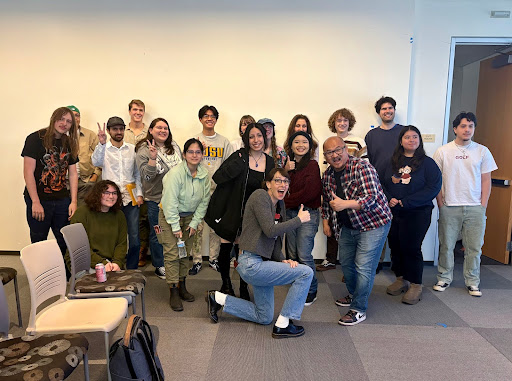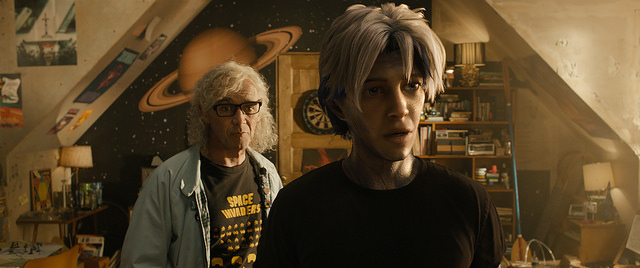‘Ready Player One’ adaptation nearly ran out of lives
(L-R) MARK RYLANCE as Anorak and TYE SHERIDAN as Parzival in Warner Bros. Pictures’, Amblin Entertainment’s and Village Roadshow Pictures’ action adventure “READY PLAYER ONE,” a Warner Bros. Pictures release.
April 9, 2018
“Ready Player One” by Ernest Cline was a fantastic book that engages the inner nerd in everyone, but the movie fell into a pop culture garbage fest more than anything else.
To readers, you will rarely find a movie as good as the book when you compare the two. “Ready Player One” is no exception.
The novel is chocked full of 80’s pop culture references in which the characters, Art3mis, Wade Watts, Aech and the rest of the world try to learn as much as they can to gain control of the Oasis, a virtual reality world created by James Halliday.
With Halliday’s passing, he opens up the challenge of finding three keys to get to the Easter egg that would give the entire virtual world to the user who won.
Cline sets up the first challenge to be on the planet Ludus, a planet where online school is held.
This is where the first gate is discovered, first by Art3mis who fails the challenge of an old school Atari Joust game and then Wade, who ends up beating the challenge.
The movie opens up, diverging with the book, with a race scene where each player has their own vehicle of choice to go through a city with various obstacles and has King Kong blocking the finish line.
This giant gorilla is one of the first show stoppers that director Steven Spielberg put into the movie that rivets the audience.
The opening racing scene, while impressive visually with its CGI, shows a bit of a weak point in the script in terms of understanding the gamer mentality as pointed out by Rich Evans from Red Letter Media.
If you’re nitpicky or elitist it can come off as a disingenuous respect for gaming.
Aech and Wade meet in a chat room of Aech’s, and that’s where readers of the book discover I-r0k, an annoying hunter for the egg that the game’s creator put in.
In the film, we meet I-r0k in the Oasis. Functioning as a pet and magical henchman for the head of an evil corporation called Innovative Online Industries, or IOI.
I-r0k is sent to kill Wade’s avatar Parzival, to remove competition for the head of IOI Nolan Sorrento.
Sorrento wants to take over the Oasis so he can fill it with advertisements and a pay wall.
Spielberg tries to make heavier scenes humorous, decreasing the seriousness that Cline originally sets forth in the book.
The full scope of Wade’s determination is not fully grasped by the movie, shown by the reference that Halliday uses in the riddles being easily found out through Anorak’s Journals, a space in the Oasis where any member can peruse through Halliday’s life.
However, in the novel, Wade and the other hunters have to research and familiarize themselves with every bit of 80’s culture and beyond that Halliday associated with in order to try to understand what each challenge and riddle entailed.
A major shift from the book is the way Spielberg portrays Wade as a love crazy boy who drowns Art3mis in his affection from the beginning.
This quick romance on screen is a lot more understandable when it was over a period of months in the novel.
Art3mis also gives herself up to IOI headquarters, playing the damsel in distress for Wade, while in contrast, Wade puts himself into IOI headquarters on purpose, with a plan to expose IOI and all their lies.
Spielberg instead plays into the trope of helpless woman, putting Art3mis into a weak position where she needs to be saved.
Another weak point is that the message of the book and movie, about ads becoming super prevalent in the Oasis as a bad thing, were shown heavily throughout the movie and during the climax of the film.
Overall, Spielberg succeeds in creating a fun alternate world that with the help of CGI transporting you into the Oasis and turning this movie into a classic, suspenseful, action packed movie that Spielberg created and that we all have come to love.







































































